A million miles away
Temple, Philadelphia’s ‘diversity university,’ has seen a plummeting share of Black students over the last 25 years, even as it rapidly expanded enrollment.

The U School opened in 2013 in North Philadelphia with the goal of giving the public high school’s largely Black student body a better chance at college.
Just a few blocks away would be a likely destination: Temple University, with its big red T’s dotting the area and its historic mission to educate the city’s diverse working class.
But for most of the U School’s 300 students and others from Philadelphia’s low-income neighborhoods, the city’s only four-year public college might as well be a million miles away.
Most U School graduates have never applied. And of the dozen or so who did over the last few years, only two were admitted, said Paula Crawford, school counselor, who says she gets little outreach from Temple.
“We are literally in their backyard,” Crawford said. “There should be a more targeted relationship, understanding the needs of our students, and how to bridge that gap.”
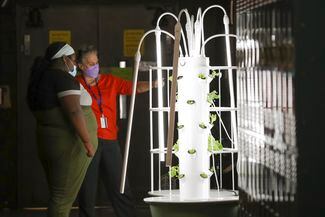
Temple’s campus and health-care system sprawl across some of the poorest neighborhoods in one of the nation’s poorest big cities. The 37,000-student university offers a gateway to the middle class in the form of a college degree.
But as Temple vastly expanded its enrollment and strove for a higher academic profile over the last 25 years, it failed to widen that gateway for Black students. A quarter century ago, Black students were 28.4% of Temple’s undergraduates, federal data show. By 2016-17, the African American share had bottomed out at 12.6%.
At the same time, Temple became out-of-reach for many Black Philadelphia students who graduated from the city’s underfunded public schools. Internal Temple documents show that graduates from some Philadelphia high schools have almost no chance for admission while Temple’s Black applicant acceptance for freshmen from Philadelphia and other geographic areas has considerably trailed the university’s overall acceptance rate, though the gap has narrowed recently.
Some Temple faculty members say they raised concerns about the slide in Black students more than a decade ago and assert it never should have gone unaddressed for so long.
“Someone should have spotted that, flagged that, screamed about that before it dropped by almost half,” said Karen M. Turner, an associate professor of journalism at Temple, who had expressed concern years ago in a piece she cowrote for a faculty publication.

Part of the decline has been driven by Temple’s quest to stay competitive with peer colleges, which resulted in admitting students with higher SAT scores. That hurt some Black applicants who graduate from high schools with fewer economic resources and who score lower on standardized tests, long criticized as biased against students of color.
And even though Temple has made standardized test scores optional for admission since 2015, it continued until a year ago to base its merit financial aid awards strictly on those scores and grade point averages, which also worked against lower-income Black applicants.
Related story
Also, Temple’s $30,500 price tag for in-state students places it beyond the means of many students of color in a state with one of the nation’s weakest funding formulas for higher education.
Officials at Temple, which hired its first Black president last summer, say their commitment to diversity has never waned. The comparison over time understates its Black enrollment, they say, because it fails to take into account mixed-race students, a new racial category in the last decade.
But even if all 940 students in the mixed-race category were added in 2017 — and not all of them are Black — Temple’s share still fell considerably, to 15.7%, data show.
Officials also argued that Temple has had to adopt higher admissions standards to stay academically competitive and that it made no sense to accept students who could not do the work and then drop out with debt.
“As other schools become more competitive, you have to stay with the game,” said Valerie Harrison, Temple’s vice president for public affairs. “And you owe it to the alums to maintain a high value of their degree.”
Harrison argued that Temple’s Black student population has always been on par with or ahead of Pennsylvania’s overall Black student population, ages 18 to 24, and considerably higher than that of many other schools. And Temple has become more diverse in other ways, university officials said. Latinx students now account for 8.3% of students at Temple, up from 3% in the late 1990s. Temple also enrolls more Asian/Pacific Islanders – 12.7% compared with 9% over the same period.
Subscribe to The Philadelphia Inquirer
Our reporting is directly supported by reader subscriptions. If you want more accountability journalism like this story, please subscribe today
Still, Shawn Abbott, Temple’s vice provost for admissions, financial aid, and enrollment management, acknowledged that leading up to 2017, African American enrollment “slid to levels that were and are at odds with Temple’s reputation as a popular destination for Black students.”
But Abbott said those numbers reflect more of a recruitment failure than discrimination.
Since he was hired in 2018, Abbott said he has taken steps to diversify his staff, increase outreach to Philadelphia public schools and add programs to enroll more students from the surrounding neighborhood. Seventeen percent of the most recent freshman class are Black, and more than 45% are students of color, up from 31% five years ago, he said.
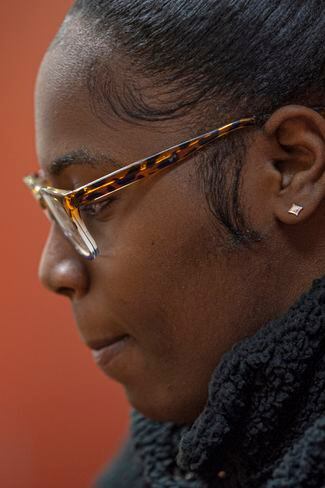
Trends over the last few years show a declining enrollment of white undergrads with modestly growing numbers of Black and mixed-race students.
Still, that hasn’t erased past missteps.
“Temple dropped the ball for a period of time,” Abbott said. “Temple had almost lulled itself into a sense of complacency that because we are quite literally in the city of Philadelphia and essentially a university that is part of one of the most historic African American communities in the United States that perhaps we were more ethnically diverse than we really were.”
‘Acres of diamonds’
Temple epitomized a local college for most of its existence. Baptist minister and founder Russell Conwell believed that education should be widely available and Temple initially offered open admission, free tuition, and night classes.
He also told audiences in his “acres of diamond” speeches to find prosperity and success in their backyard.
“I say to you that you have acres of diamonds in Philadelphia where you now live,” he said in a speech he gave more than 5,000 times. “Arise, you millions of Philadelphians, trust in God and man, and believe in great opportunities that are right here.”
When a group of Philadelphians asked Conwell to open a medical school because the ones that existed excluded Blacks, women, Jews, and immigrants, Conwell readily agreed. It opened in 1901.
Conwell died in 1925. Over time, the working-class neighborhoods that fed the city’s textile mills around Temple fell on hard times. Factories closed. Unemployment rose. White families left. Black families moved in. President Millard E. Gladfelter, who became Temple’s president in 1959, “believed that urban universities were duty-bound to help solve their neighborhoods’ economic and social problems,” James Hilty, a Temple history professor, wrote in his 307-page book on the university published in 2010.
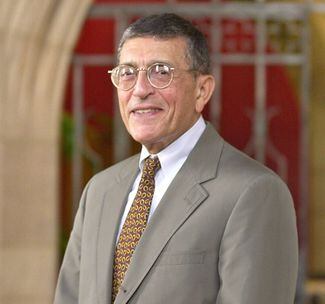
But others at Temple harbored loftier ambitions: a “Harvard on the Delaware,” Hilty also wrote. Peter Liacouras, the university’s president through the 1980s and 1990s, focused on developing the “Temple Town” concept, demarcating it as an upwardly mobile academic enclave within North Philadelphia neighborhoods. Liacouras’ successor, the hard-driving David Adamany, raised academic standards.
Student housing went up. Temple’s expansion brought tens of millions of dollars for economic development to North Philadelphia, in addition to gentrification, though not broadly distributed wealth. The 2020 Census data show that 61% of the North Philadelphia residents within Temple’s core area earn incomes of less than half the city’s median of $47,474 a year.
Temple traditionally enrolled more Black students than other colleges. Still today Temple’s share of Black students (13.8%, or 3,758 students) is more than double that of Pennsylvania State University and the University of Pittsburgh, which are partly funded by state taxpayers. It also is significantly higher than the University of Pennsylvania (8%), Villanova (5%), and Haverford (5.7%), all private.
But other Pennsylvania public colleges have enrolled more Black students in the last decade. East Stroudsburg University added 568 as its overall enrollment fell, with Black students 20.3% of all undergrads by 2020.
West Chester University, with 11% Black students, dramatically narrowed a racial gap with Temple. Meanwhile, much smaller Philadelphia-area Catholic institutions, La Salle (17.8%), Neumann (28.2%), and Rosemont (33.5%) enroll larger shares of Black students than Temple, federal data show.
Mixed-race students add 2 to 6 percentage points to the overall Black share at the institutions.
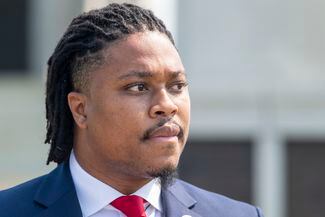
State Rep. Malcolm Kenyatta, who was raised in Philadelphia and is a 2012 Temple graduate, said he has repeatedly raised the issue in public about Temple’s lack of students of color.
“The numbers do not make sense and we need a student body that reflects the community,” he said. Conwell’s “vision was about diamonds in the backyard and Philly is our backyard. We are missing a big part of what Temple should be and it has been. I want to see more students from the neighborhood and I want to see more students of color.”
‘I wish they did more’
The Philadelphia School District is home to some of the highest-performing high schools in Pennsylvania, such as Masterman and Central. But many high schools struggle, serving students who largely live in poverty and in some cases graduating half to fewer than two-thirds in four years. Even for the highest-performing students in those schools, getting into Temple can seem daunting.
Temple admission data from 2016, the university’s most selective year in two decades, reveal how daunting. Acceptance rates for most Philadelphia high schools that year, other than the highest-performing magnets, were well below Temple’s overall rate of 52%, according to Temple’s internal data obtained by The Inquirer.
Only 1 of 21 applicants from Benjamin Franklin High School was admitted, one of 11 from Kensington CAPA, and just two of 35 from Simon Gratz. At Strawberry Mansion, which nearly closed several years ago for lack of students, only one of eight applicants was admitted.
By comparison, Pennsbury and Central Bucks South High Schools in Bucks County, which serve students from more affluent families, saw acceptance rates of 72% and 76%, according to Temple’s internal admission data from 2018.
Related story
Temple didn’t dispute the accuracy of the data but cautioned that the information likely came from a document prepared for internal use only and “not subject to the data integrity and verification processes required for official publications.”
Ameera Sullivan, a Strawberry Mansion school counselor, said many of her students don’t have the GPA or standardized test scores to get in.
Even students with higher grades might not get in. Sullivan, a Strawberry Mansion graduate, is a prime example. She grew up at 24th and Cecil B. Moore Avenue, less than a mile from Temple.
“It’s always where I wanted to go,” she said.
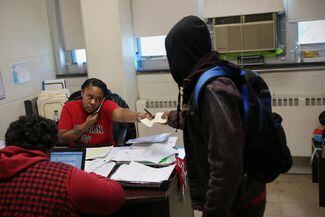
Though she got pregnant at 13 and was raising a daughter, she graduated in the top half of her class, finishing senior year with straight A’s.
But Temple didn’t admit her. So she went to Penn State Abington for two years and tried again, this time getting into Temple and graduating. Still, she thought she should have gotten in the first time.
“If they had just taken a little more time to learn about me as a person, I feel like maybe I would have gotten in,” she said.
As a counselor, she said she’s been trying to bridge the gap between her alma maters so that more students will have an opportunity.
She wishes Temple would create a path for students who may lack top academic statistics but have potential.
“They should target those students and ... build those students up,” she said, “instead of using GPA or test scores to exclude them. I love Temple. I just wish they did more.”
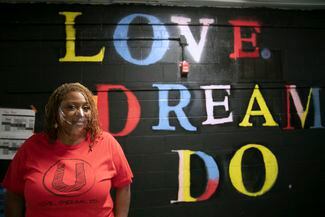
At Seventh and Norris Streets, the U School was started eight years ago as part of a School District “innovation” network designed to offer students alternatives to conventional high schools. Its curriculum focuses on agriculture, food, and natural resources and is competency-based. Teachers grade students on papers, labs, films, and other projects, emphasizing collaboration, creativity, and self-improvement. The school’s logo looks like a collegiate “U” inside a circle.
Graduating classes are small, about 50 students. Crawford estimates 10%, or roughly five a year, apply to Temple. In the 2018 graduating class, the school’s first, one student was accepted and attended, she said. The same thing happened in 2019. In 2020, everything was disrupted by the pandemic.
Crawford hopes this year is different. Several of her most promising students are eyeing Temple, including David Carter.
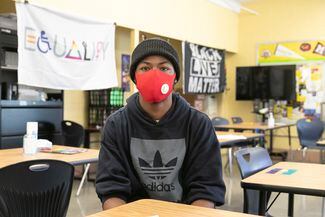
The senior has dreamed of attending Temple since he visited the campus on a school trip in sixth grade.
“I kept that as a goal to keep me motivated through high school,” said Carter, 17, who has a 3.63 GPA and is eligible for induction into the National Honor Society.
Carter has applied. He would be the first in his immediate family to attend college.
But there aren’t a lot of students like him at U School. Many don’t consider Temple, Crawford said. In some cases, they feel as if they want to leave the neighborhood.
The lack of interest, she surmised, also has to do with the level of engagement from colleges’ admission staff. Those at some universities, including Kutztown, Mansfield, Shippensburg, St. Joseph’s, Colgate, and Eastern, take time to visit and talk to students, she said.
From Temple admissions, Crawford said she’s heard very little, though she noted a recruiter visited in October and Temple said another staffer conducted a virtual visit last April. There was one admissions staff member, Tyree Williams, Temple’s former assistant director of multicultural affairs, who did spend time at the school and tried to develop a rapport with students, she said.
But he’s gone.
A job that wasn’t what he thought
Williams, 40, grew up in Philadelphia public housing and graduated from Samuel Fels High School in the Northeast. At that time, everyone knew that Temple was an option for college, he said. More than a decade later, that was no longer true for most Philadelphia kids with college aspirations, Williams said.
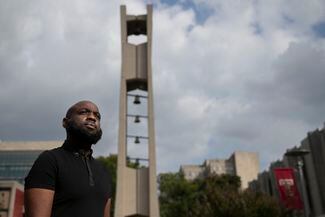
Williams, then with his master’s in education from the University of Pennsylvania and studying for his doctorate in education at Temple, felt he could help rectify this. And when a job came up in Temple’s undergraduate admissions department, he applied.
“I was going to come to Temple and that would be my job forever. I would come there and I would grow the diversity team [to] where it would be a fully functional team,” said Williams, who lived at 32nd and Cecil B. Moore, within walking distance of Temple.
Temple hired him to head multicultural recruiting in its undergraduate admissions office in December 2016, the year that the Black student population was bottoming out. He viewed himself as the public face of diversity recruiting and he said he threw himself into the job, visiting Philadelphia high schools during the day and attending college fairs at night. His supervisor would say while evaluating him that he “never says no.”
Williams thought he was making inroads, raising Temple’s profile with overlooked city high schools. But Williams noticed that Temple seemed to care mostly about a handful of Philadelphia feeder schools.
Williams felt isolated. He had neither a budget nor a staff for diversity recruitment. There were no specialized admission materials for him. And he couldn’t travel outside of Philadelphia, which he believed had been part of the job description when Temple hired him.
Williams asked questions in meetings. His suggestions were mostly ignored, he said. Relations with his managers cooled. Supervisors referred him to a job coach for his communications skills.
During a human resources mediation, Williams told two of his supervisors that they should resign or be fired because they were not helping with diversity recruitment.
Williams requested family medical leave for depression and anxiety in October 2018. Temple approved it and would later extend the leave five times. As the time approached for Williams to return, he asked to work remotely, but he and Temple could not come to an agreement on it. Temple says in court documents it fired him after at least three unexcused absences. Williams denies Temple’s claim in court documents and says he did “not refuse to come to work” and that he was seeking to resolve the issue of an accommodation with the university.
In May 2020, Williams sued Temple for discrimination, a hostile work environment, and violations of the Americans with Disabilities Act.
Temple has denied the claims. Williams “views everything with a lens that he was being victimized and tokenized by Temple, but willfully ignores his own actions or the needs of his former employer,” Joe H. Tucker Jr., Temple’s attorney, said in court documents.
At the time of his firing, according to the deposition by James Van Blunk, Williams’ supervisor, there was one other Black staffer on the undergraduate admissions team. There were eight staffers on his team. Van Blunk hired some white staffers but not Black staffers while Temple employed Williams.
Williams believed this was part of the problem.
“You believe that they are a space that is welcoming and affirming to everyone and I don’t think that’s the reality for a lot of people,” he said.
‘Risk of inequity’
Temple is far from alone in its struggle to enroll a more diverse student body. A recent report by the Education Trust found that the nation’s 101 most selective public colleges and universities made little progress in giving access to Black and Latino students over the last 20 years.
”The findings are much worse for Black students who have less access at these institutions than they did in 2000,” the report said.
As college costs have risen, so have the inequities, said David Hawkins, chief education and policy officer for the National Association for College Admission Counseling.
“Almost without doing anything, institutions that don’t dramatically reduce their costs are going to have the risk of inequity in some of their outcomes,” he said.
In Pennsylvania, some blame lies with the state. Temple was aiming to grow more competitive while state funding flattened or dropped. As a consequence, tuition rose and there was less money to spend on financial aid and more incentive to find students who could pay.
“It’s wrong to say administrators are sitting there saying they don’t care about Black students anymore,” said Sara Goldrick-Rab, a professor of sociology and medicine at Temple. “I wish it were that simple because we could fix it.”
Colleges that truly want to diversify their student body need to develop “an intentional approach,” said David Merolla, an associate professor of sociology at Wayne State University in Detroit. “Just sitting back and thinking we are in a diverse area and this will take care of itself, that will not work.”
Some students and faculty were alarmed to learn of Temple’s drop in Black students.
“It’s something that should be seriously looked at,” said Samantha Quinlan, a junior from Long Island and vice president of student government.
Will J. Jordan, faculty union president, said: “We have to do a much better job of keeping and cultivating Black and Latinx students who live in North Philadelphia.”
This isn’t new.

Kimmika Williams-Witherspoon, faculty senate president, recalled an interchange she had with Adamany, the late Temple president, when she was a non-tenured track professor in the early 2000s. He had come to a meeting to tout Temple’s rising SAT scores.
“I said to him, ‘Aren’t you concerned about what this will mean in terms of our diversity?’” she recalled asking.
She pointed out that standardized tests are biased against students of color and that students from some urban schools don’t have the same access to resources, such as test prep, as students in more affluent schools.
“He said, ‘Well, there’s always the back door,’” she recalled. He explained that students could go to community college and then transfer to Temple. “I said, ‘Well, isn’t it a shame in this day and age that Black people still have to go through the back door?’”
She’s glad she spoke up then.
Her son, a graduate of St. Joseph’s Preparatory School, was wait-listed when he applied to Temple, even though he got good grades, held leadership positions in clubs, and completed an intensive summer program in China and another in London.
She was stunned.
She complained. Her son was admitted within 30 minutes, she said. It made her wonder how many other Black students were unfairly passed over.
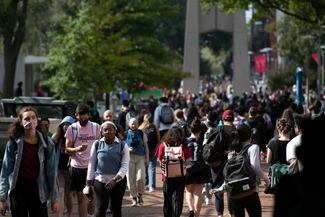
Turner, the journalism professor who started at Temple in 1992, said she began to notice fewer Black students in her classes as the university became less of a commuter school. And those who attended weren’t coming from Philadelphia. They were from New York, Washington, Baltimore, and other locations, she said.
The absence of Black males is noticeable: “It is atypical for me to have more than one Black male student in my class,” she said.
Both Turner and Williams-Witherspoon also are concerned about the lack of Black faculty – a challenge faced by many universities – and particularly those with tenure, who might draw more Black students and serve as mentors.
Only 38, about 5%, of Temple’s tenured professors are African American, while nearly 70% are white.
Of those 38, Williams-Witherspoon said, few are full professors.
Because there are so few, those faculty are continually asked to serve on committees for no additional compensation, said Steve Newman, a former faculty union president.
“It’s emotionally taxing,” he said.
Temple moves to improve diversity
Temple officials say they have taken steps to improve student diversity, inside the admissions office and out.
Related story
The school last fall launched the Cecil B. Moore Scholars Program, offering full four-year scholarships to students with financial need, who live in the eight North Philadelphia zip codes and attend taxpayer-funded district or charter schools.
The first group of 22 took a free general education class at Temple as high school seniors and another class over the summer to prepare them for college life. They are freshmen this fall.
The move came as colleges nationwide faced a racial reckoning in the aftermath of George Floyd’s killing, and Temple pledged more than $1 million to combat racism, including the new scholars program.
“The answer is not simply bringing people in to incur debt,” Harrison, the Temple vice president, said. “The answer is to create real accessibility and we believe we’re doing that.”
The scholars program, which will add new students annually, runs on a $250,000 budget, plus the cost of the scholarships — roughly $363,000 the first year.
All those in the inaugural group, described by Abbott as the “creme de la creme” of their high schools, are students of color. About three-quarters are Black, 18% Hispanic and 9% Asian. They come from 16 high schools, including charters, magnets, and traditional high schools.
Since Abbott arrived at Temple in 2018, the university also has added more employees of color to admissions. Seven of 12 staffers responsible for student recruitment in the United States are people of color. And while no one spoke Spanish when Abbott started, two now do.
The team also began more intentional outreach to all high schools in Philadelphia, Abbott said.
During the pandemic, that may not mean in-person visits everywhere, but at least a virtual connection or invitation to attend a program on campus, he said.
The university also revised criteria it uses for merit aid. It previously considered only standardized tests and GPAs, which disadvantaged students of color, Abbott said. Now, the school looks at academic rigor, foreign-language proficiency, and whether students come from low-income neighborhoods, are the first in their family to attend college, and even whether they hold part-time jobs.
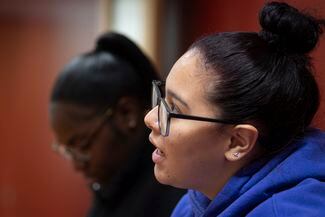
The efforts led to a more diverse class than Temple has seen in years, Abbott said. The university also noted more than a 3% increase in Philadelphia students. More than 700 freshmen, about 15%, are Philadelphians.
“Our theory is that because we are seeing more of our students of color qualifying for merit-based scholarships, it’s making Temple a more affordable place,” Abbott said.
Abbott said that when Temple began recruiting for the scholars program, he was alarmed at how few students had been to Temple’s campus.
Shakeya Watt was an exception. She grew up a few blocks away and attended the nearby Carver High School for Engineering and Science. So she had been to Temple for some enrichment programs.
With eight siblings, she would have had to take out loans to attend Temple, she said. But between the scholarship and other aid, all her costs are covered, she said.
An aspiring doctor, she said getting good grades is her top priority and Temple offers a lot of support. Students meet monthly as a group and have access to tutoring, advising, and other support.
“They have someone here to advocate for them and help them advocate for themselves,” said Paris Williams, who oversees the program.
Watt said she is learning to balance her time among courses. She came in a strong student, with a 3.7 GPA from Carver, a competitive magnet.
Another scholar, Bianca Perez, of Hunting Park, graduated in the top 10 of her class at Edison, a traditional neighborhood high school.
The social-work major, who comes from a single-parent household and has three siblings, said she also would have had to rely on loans. With all her aid, she only had to pay $500 this semester, she said.
”It was like a hope for me,” she said.
Staff Contributors
- Reporters: Bob Fernandez, Susan Snyder
- Contributed reporting: Chris A. Williams
- Editors: Cathy Rubin, Karl Stark
- Digital: Patricia Madej, Rachel Molenda
- Copy editing: Richard Barron